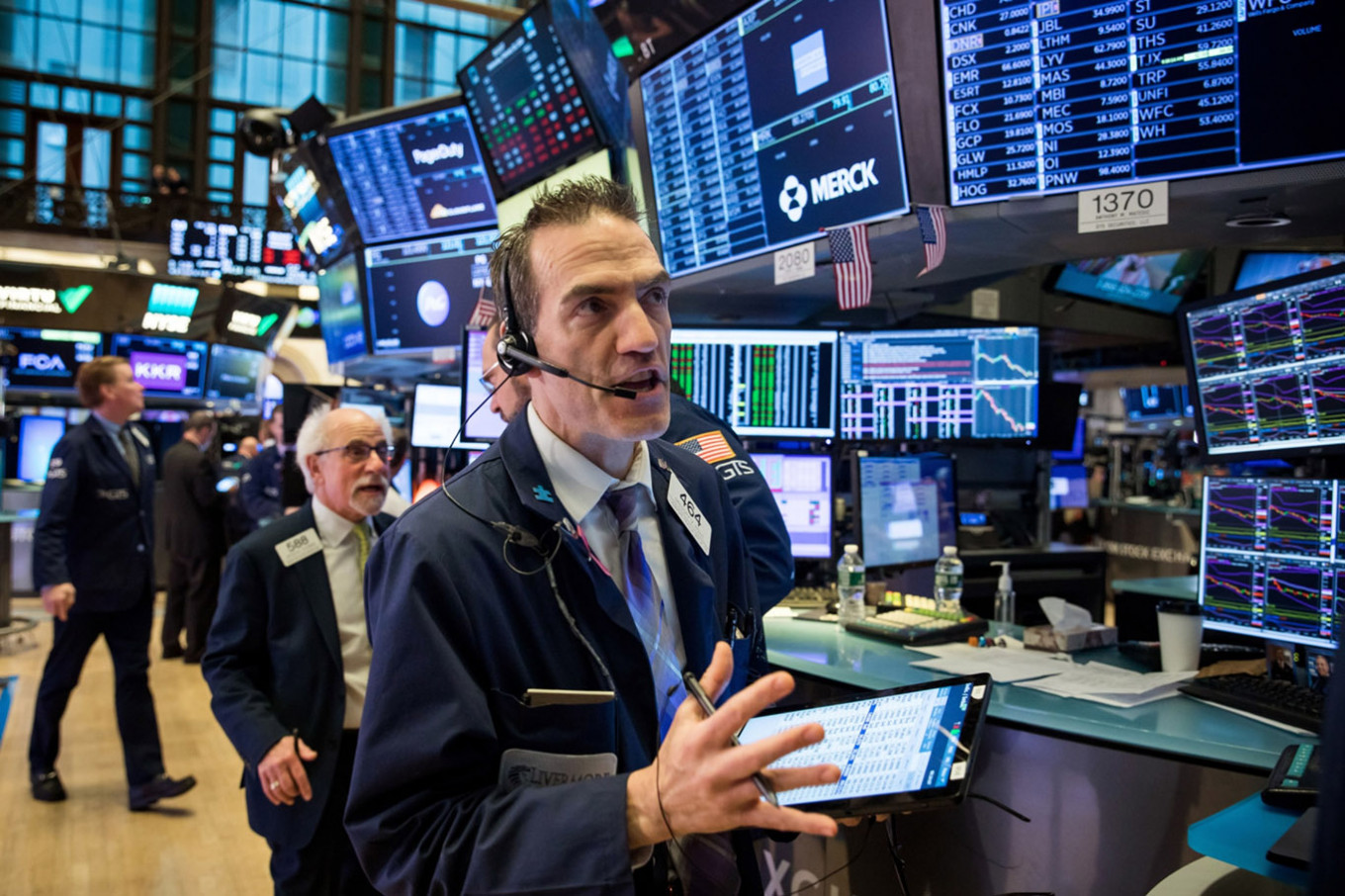Popular Reads
Top Results
Can't find what you're looking for?
View all search resultsPopular Reads
Top Results
Can't find what you're looking for?
View all search resultsS&P 500 plunges 7 percent, triggering market-wide stock trading halt
Futures had plunged 4.89 percent overnight Sunday.
Change text size
Gift Premium Articles
to Anyone
T
he severe rout in US stocks triggered trading curbs that the New York Stock Exchange put in place after the 1987 Black Monday crash.
A 15-minute trading halt took hold after the S&P 500 Index fell 7 percent to 2,764.21 as of 9:34 a.m. in New York, triggering the breaker for the first time since December 2008 at the depths of the financial crisis. Futures had plunged 4.89 percent overnight Sunday, triggering exchange rules that limit losses on those contracts and distorting price discovery for the cash market before the opening.
When trading resumes, another 15-minute pause will happen if losses reach 13 percent, a drop that would put the S&P 500 at 2,585.96. If the decline hits 20 percent, or 2,377.9, markets will close for the day. Only the 20 percent rule applies in the final 35 minutes of cash trading. Traders have never seen a 13 percent or 20 percent breaker trip.
“Even though people are concerned it could create more problems, it does allow people to step back and re-assess what they’re doing,” said Matt Maley, an equity strategist at Miller Tabak & Co. “The one thing is, it’s been a long time since any of these circuit breakers kicked in. Back then, it was positive. It allowed people to calm down a little bit.”
The last time the futures trading limits hit was Nov. 8, 2016, following Donald Trump’s shock election victory. This time, a plunge in oil prices added to weeks of concern that the spreading coronavirus will derail the global economy. Crude oil fell as much as 34 percent to US$27.34 a barrel, the worst day since the Gulf War in 1991, after Saudi Arabia initiated an all-out price war.
Volatility has reigned in markets around the world amid an outbreak that has infected more than 108,000 people. At least 10 billion shares have traded on US exchanges each day for two weeks, and the VIX has closed above 30 for seven days straight. Such turbulence is putting the vitality of the longest-ever bull market in jeopardy.










